What are dry closets and how to choose them?
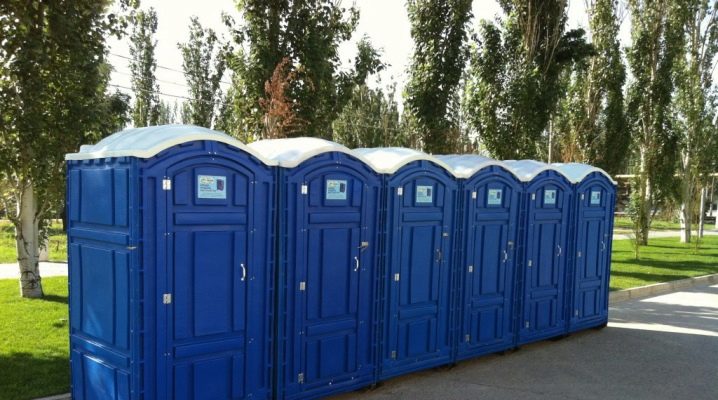
The lack of a central sewerage system should not become an obstacle to comfortable rest in the country or in any other place remote from the benefits of civilization. In this case, compact dry closets will help to create all the necessary sanitary conditions. In the article we will consider what it is, how they look, what they are, what are their performance characteristics.


What it is?
There are three ways to equip a bathroom in country houses. The first is structured like autonomous sewerage - it is a local cleaning system. Such a mini-toilet is hygienic, effective, but its placement in relation to a residential building, the fence of a neighboring site and a water source is strictly standardized. Moreover, such equipment is not cheap.
The second option is storage tank or, as the people say, a cesspool... However, it needs frequent pumping down. It can also give off an unpleasant odor. The most modern solution is a dry closet.
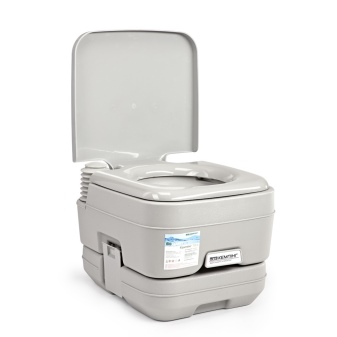
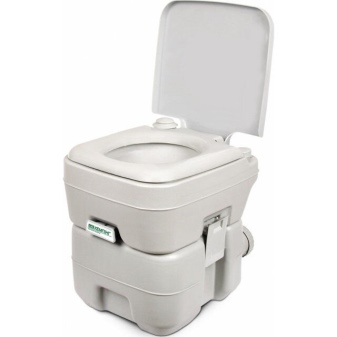
A traditional dry closet is a sanitary-technical structure. Its principle of operation is based on the natural decomposition of feces and other human waste. This process is accelerated many times over due to the use of natural, chemical and biological components. Most modern devices include ventilation and artificial drying.
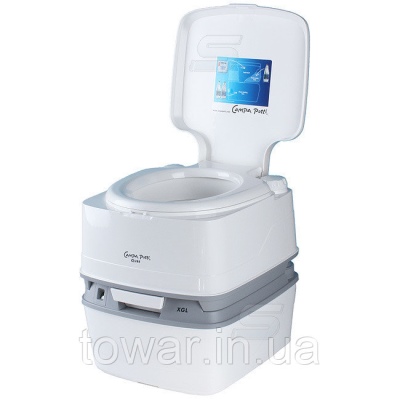
Dry closets are compact unlike other options... This technical device does not require connection to the sewerage and water supply system. Therefore, it can be used on any free area, regardless of the location of residential buildings and water intake areas.
For the processing of excrement, natural ingredients and chemical reagents are used here.
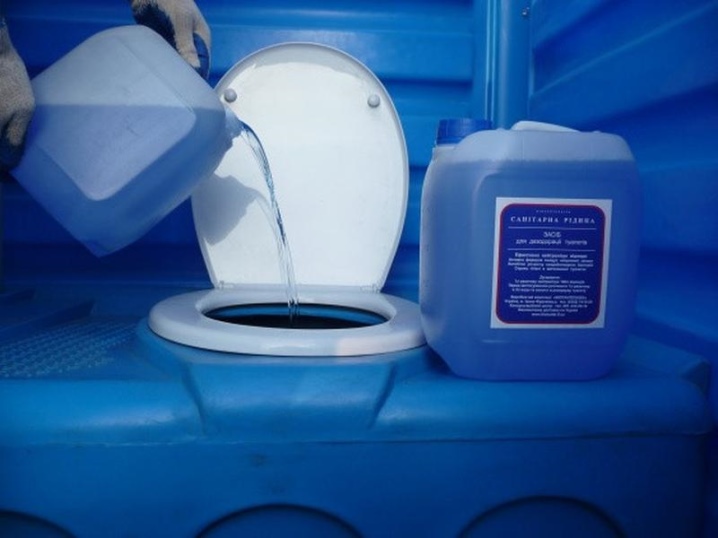
They are based on one of the following substances.
-
Peat - this ingredient has the property of absorbing liquid media and subjecting feces to mineralization.
-
Compost - is located in the cistern of the dry closet. Works in the same way as in a compost heap.
-
Sawdust - in pure form they are used extremely rarely, most often they work together with peat.
-
Bulk powders - a mixture that absorbs liquid and triggers the transformation of excrement into liquid media. Designed specifically for mobile dry closets.
-
Microflora - liquid preparations containing a high concentration of bacteria. Their activities are aimed at waste disposal.
-
Bioenzymes - liquid preparations based on enzymes. Stimulates the processing of human waste into safe, odor-neutral liquids that can then be used as organic fertilizer in the garden.

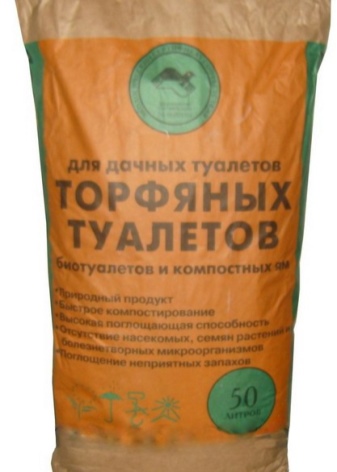
Dry closets can have different designs. They have a couple of tanks anyway. The upper one is directly a toilet bowl, in the lower one feces are collected and processed.
There are two categories of these devices - mobile and stationary. The first ones, as a rule, have small dimensions, therefore, they do not cause difficulties during installation and transportation. Such devices can be taken with you on long trips to nature. The second group is represented by the booths of dry closets. They are equipped with a removable container, which is renewed as it fills.
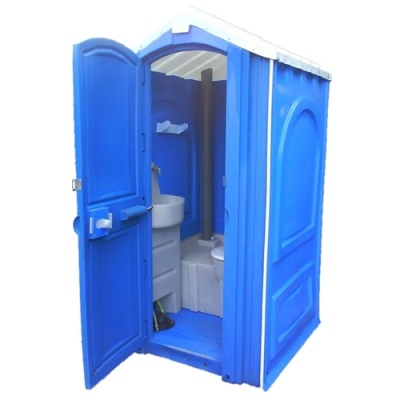
Views
Depending on the technology for processing human excrement, there are 3 main types of dry closets.
Composting
Such dry closets can be called modern versions of closets, in which human waste was abundantly sprinkled with peat, and then transferred to a storage tank. Organics launched processing, as well as the separation of feces into solid and liquid media. Dry closets, unlike their distant predecessors, are filled with a bioactive mixture based on peat or a mixture of peat with sawdust, decomposition in them is much faster and more efficient.
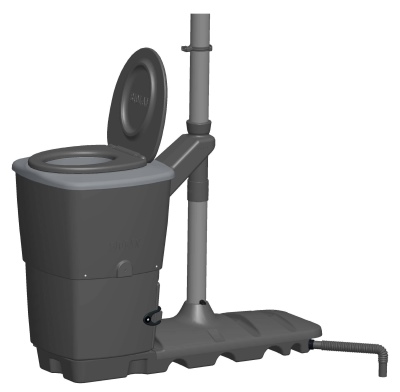
Dense residues after processing are sent to a compost pit, and after 2-3 years, nutritious organic fertilizers for garden plots are obtained from them. The liquid phase is highly purified, so it can be safely discharged into the irrigation system. There is also a gaseous phase. In this regard, the bottom tank is a sealed container with a large capacity. It has a pair of taps - one is responsible for drainage, the second is connected to the ventilation duct.
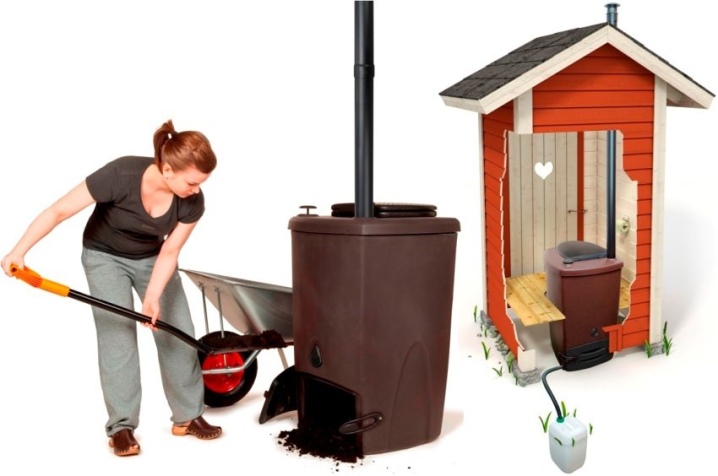
Modern manufacturers offer dry closets for installation in a separate structure on a columnar or screw base, in which case the storage tank of the mini-toilet is located in the subfield.
Pros:
-
simplicity of the device;
-
with a significant capacity of the lower tank, frequent cleaning from solid waste will not be required;
-
affordable price of reagents;
-
environmental friendliness, the possibility of using waste in gardening.
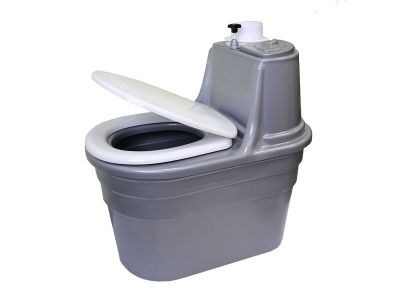
Minuses:
-
stationarity;
-
the need for the allocation of a ventilation chimney;
-
for products with increased productivity, the location area and the plan for moving the lower tank should be carefully selected;
-
with a significant influx of visitors, the peat backfill does not always cope with the absorption of organic matter in time.

Liquid
There are two types of liquid reagents that interact with feces.
Formaldehyde - completely suspend the course of biodegradation, neutralize bacteria, the activity of which leads to the appearance of stench. Formalin is a powerful antiseptic that completely destroys all living things. However, the products of its processing are classified as toxic substances, so they can only be discharged into the city sewer. Their removal into sedimentation tanks, filtration plants, as well as compost structures is unacceptable.
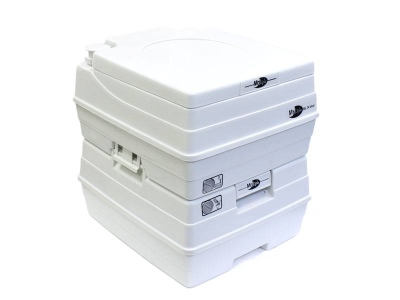
In the absence of access to the city sewage system, the filled storage tank is handed over to special services that provide services for the disposal of the contents of such bathrooms.
Ammonium - work by analogy with anaerobic septic tanks. The wastewater is processed without air intake. With rare use, such faeces can be safely sent to the compost heap.
However, with active use, they simply do not have time to "mature" to a state suitable for effective composting. In this case, they have to be disposed of.
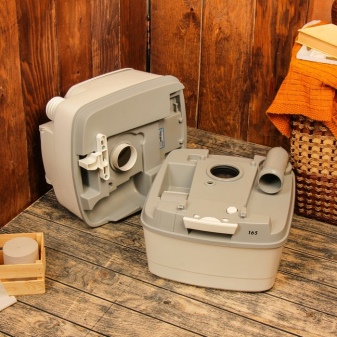
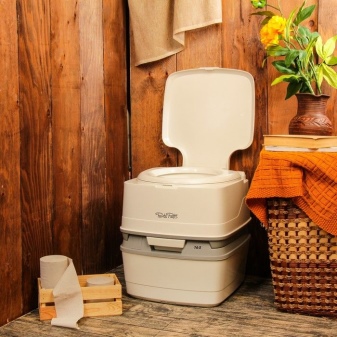
Pros:
-
compliance with sanitary standards;
-
no need for forced ventilation;
-
modern manufacturers produce portable and folding dry closets that can be easily placed in even in a car trunk.
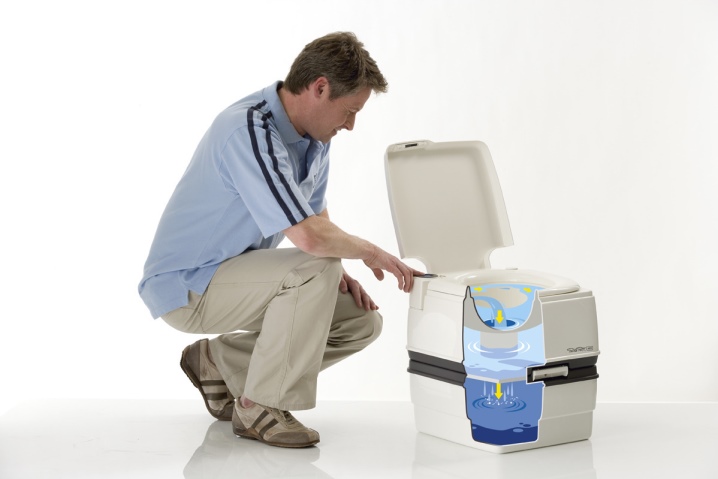
Minuses:
-
performance limitation;
-
the need for waste disposal with frequent use.
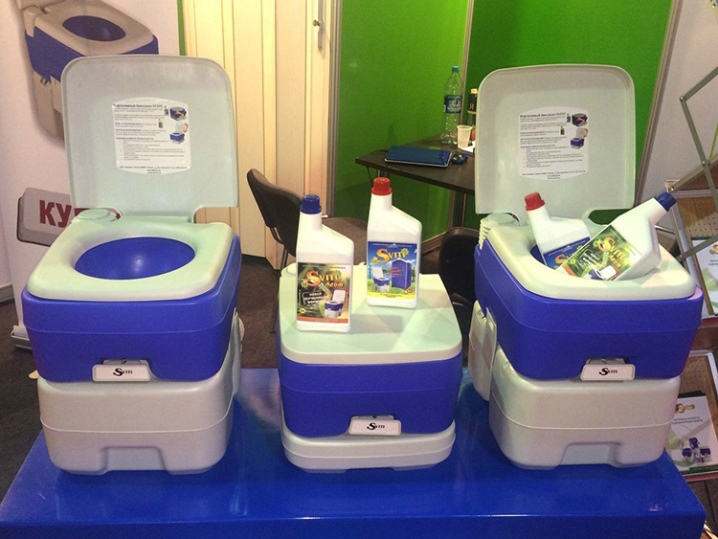
Electrical
If we consider only the comfort of use, then electric dry closets will be the best solution for summer cottages. All human waste is simply burned in it, and no water is required for flushing. And also paper is composted in full. Therefore, such models are positioned as "dry".
Pros:
-
ease of disposal;
-
recycled waste can simply be added to the ground during the digging process - they will act as an organic fertilizer;
-
no need to buy reagents;
-
long period between tank cleaning.
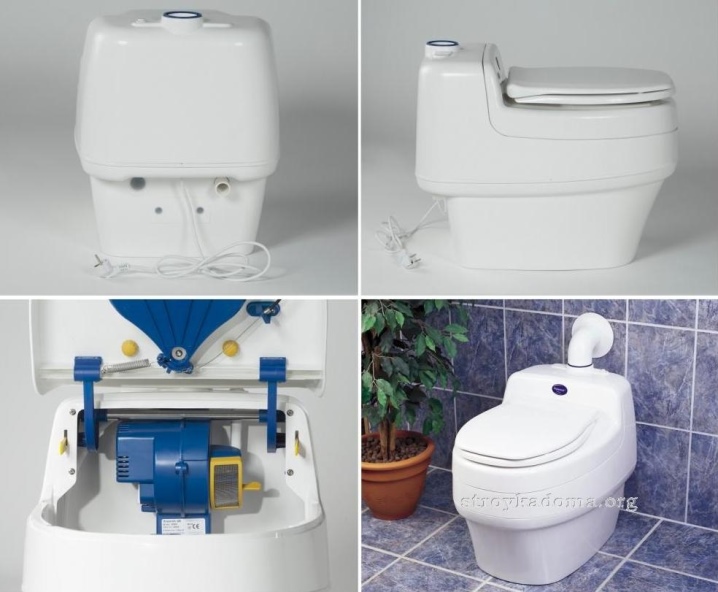
Minuses:
-
dependence on electrical energy;
-
the need to install a separate ventilation outlet for arranging the combustion chamber;
-
high price.
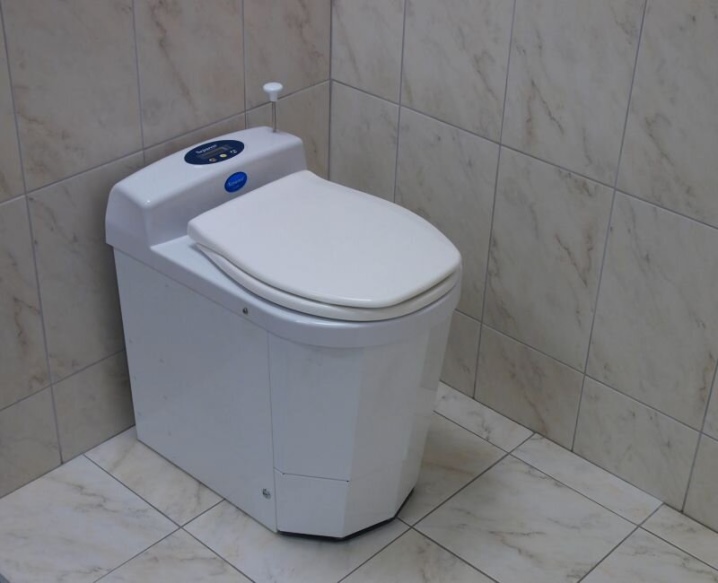
Dimensions (edit)
As a rule, the dimensions of the toilet stall of different models on the market vary slightly:
-
width - from 1100 mm to 1350 mm;
-
depth - from 1200 mm to 1480 mm;
-
height - from 2150 mm to 2600 m.
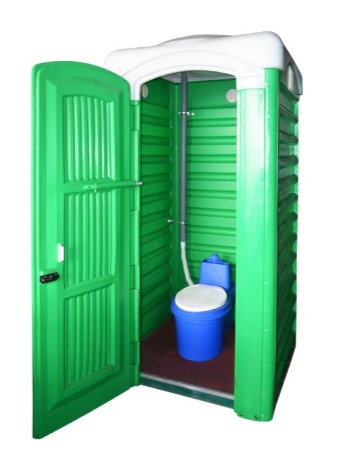
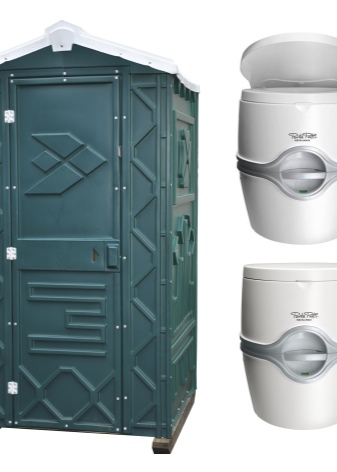
Mobile cabins can be more compact and can be folded. At the same time, the volume of the tank of an autonomous plastic booth varies from 10 to 250 liters.
Spare parts and components
The design of any dry closet provides for the need for regular replacement of parts and components. These include bags, brushes, bags, a bellows pump, piston drain buttons, and a chair on a stand. In addition, any dry closets provide additional options that increase the level of comfort of use.
-
Mechanism for adding peat - the use of the dispenser facilitates the maintenance of the dry closet. But this significantly increases the consumption of composting mixtures.
-
Thermal seat - is an advantage not only in cold seasons, but also on summer days, when coolness reigns in the morning.
-
Electric hood - the need for it arises in the case of installing a dry closet in the house, or when the chimney provides for two or more bends.
-
Outrigger, wheels or handrails - simplify the course of disposal of faeces.
-
Waste separator - allows you to separate solid and liquid phases in order to feed garden crops. At the same time, models without this additional insert have a larger volume, so they need to be emptied less often.
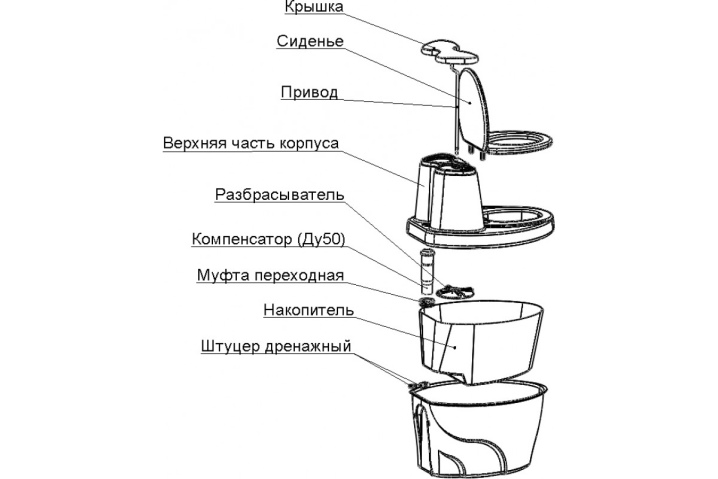
You can also find models with a washbasin on sale.

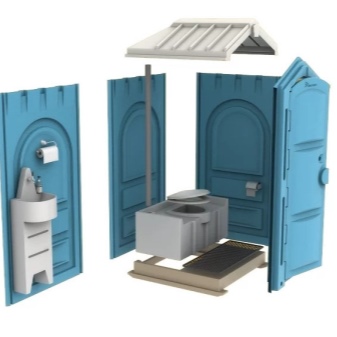
Top manufacturers
There is a large selection of models on the modern market. The most popular are dry closets of German, Czech, Spanish and Swedish production... Demand and stamps from Russia... In recent years, many Chinese plumbing fixtures have been found in stores. They cost an order of magnitude cheaper, but their consumables often break and require replacement. Ultimately, their maintenance turns out to be economically unprofitable.
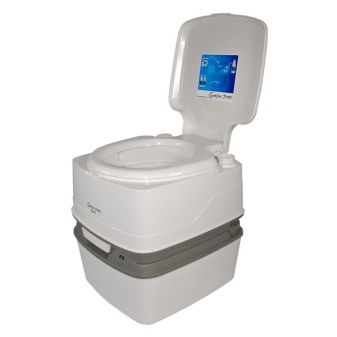
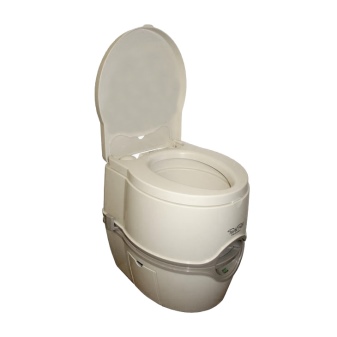
Several models can be distinguished among the best products in the rating.
"Tandem Compact"
Stationary design, the storage tank capacity is 60 liters. The seat is located at a height of 38 cm, the weight of the dry closet is only 5 kg. Requires arrangement of ventilation and drainage. The tank is quite capacious, therefore, with an average volume of use, waste is cleaned once a month. Such models can be installed on the streets, in non-residential buildings and even at home. Handles are provided on the body for easy transportation.
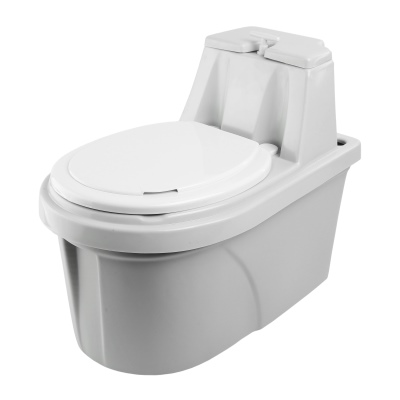
"Tandem Compact Eco"
Stationary dry closet with dry flush type. The capacity of the lower tank is quite high - 70 liters. The body is plastic, withstands a weight load of up to 170 kg. The seat height is 45 cm. The set includes a 3 m long pipe. The set includes 3 couplings, a comfortable seat with a cover and a drain hose.
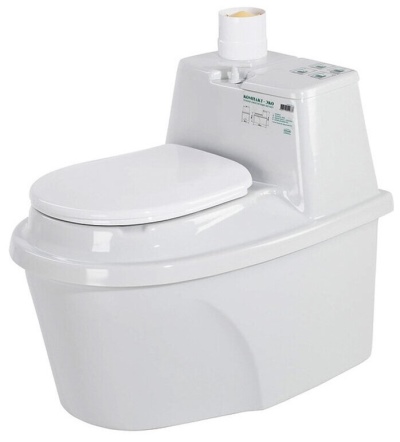
Piteco 905
One of the most popular dry closets, the storage tank of which can hold up to 120 liters of human waste. Moreover, its weight is only 12 kg.
The design includes a static platform through which the tank is connected to the drain. After disconnection, the outlet is automatically closed by a valve.
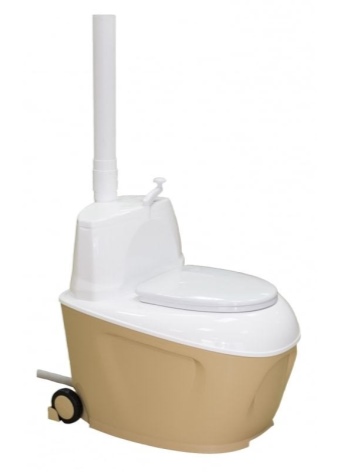
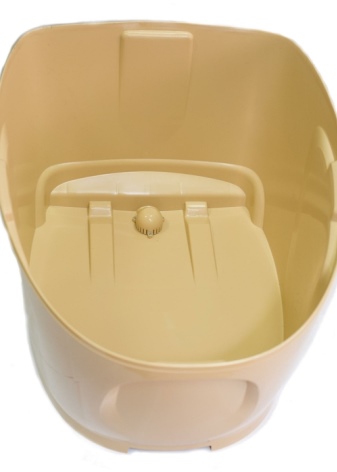
"Bioecology Ecolight Dachnik"
Stationary booth with a tank, holds 220 liters. The mass of this design is 60 kg. The main unit is made of durable fireproof polyethylene. The kit includes a chimney, ergonomic seat and toilet lid. A special holder for bags is provided inside.
The ventilation system is responsible for eliminating toxic fumes and strong odors. At the same time, installation, assembly and disassembly of the structure are simple and easy. Does not require connection to the electricity network, water supply system and central sewerage system.
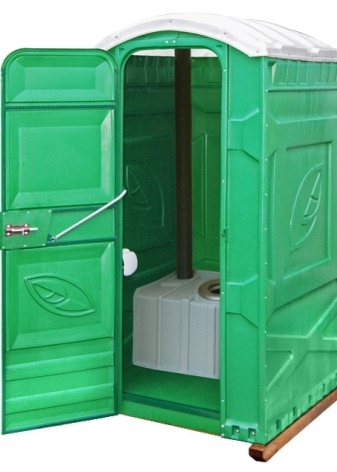
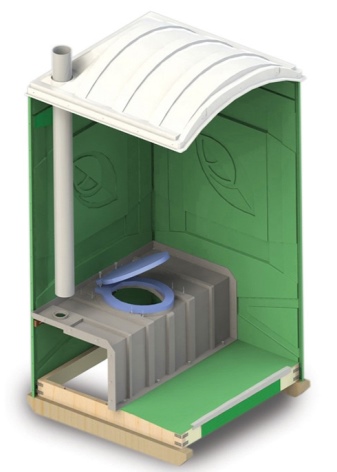
BioLet 25
Electric dry closet made of ABC-plastic. Equipped with a compost auto-mixing option. The design provides for a fan, depending on electricity.The kit includes a dry closet directly, as well as a pipe system and a catalyst. For correct operation, an extractor hood is required.
Models of the Pacto brand are recognized as a separate category of dry closets. These are standalone solutions that do not require connection to the water supply and electricity systems. The mechanism of the bathroom is based on the collection of excrement in a special film - encapsulation. Thus, all pungent odors, along with the contents of the capsule, are completely blocked.

The package includes a roll of sleeves, the supply of film is designed for 250-300 visits... Film capsules with excrement are collected in a separate tank, it can be placed in the podium of dry closets or in the basement under the bathroom. In the latter version, ventilation is not required; when using a podium, it is necessary to equip a discharge ventilation duct.
Capsulated faeces can be burned, the film used to seal them does not emit hazardous substances when burned. The container in which they were collected can be reused. The only drawback of the model is its high price. The purchase of such a dry closet will cost 65-70 thousand rubles. With the additional installation of the podium, the costs will increase by another 30 thousand rubles.
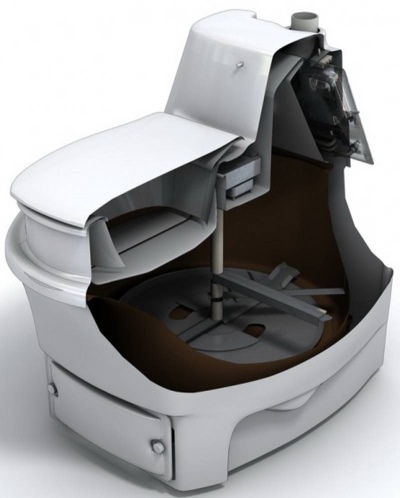
Nuances of choice
The main question that worries summer residents: which model to buy - peat, liquid or electric.
Peat-based products are optimal for owners of large plots with a compost pit area. At the same time, it should be located at a distance from the neighboring site, living quarters and resting places.
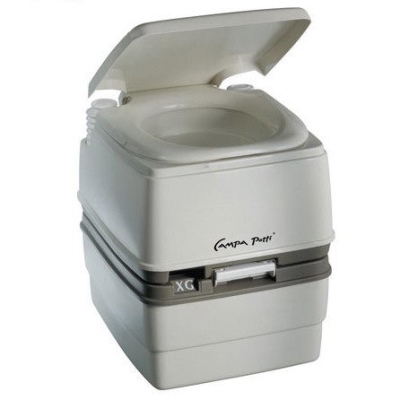
Liquid models are compact. They are suitable for small areas. The main thing is that the dacha is located near the city or in the access zone of a company that provides services for the disposal of collected feces.
An electric dry closet is appropriate only in areas where there are no power outages.
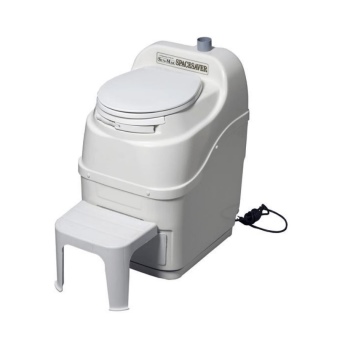
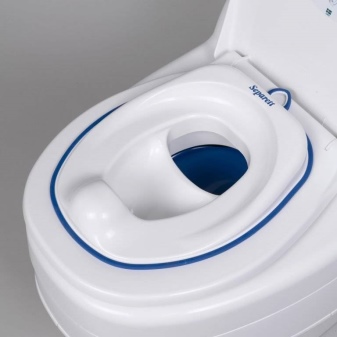
Before choosing a model of a dry closet, you should also pay attention to some factors.
- Volume of the tank. The frequency of cleaning the dry closet largely depends on its capacity. So, a container of 10-15 liters is enough for 25-30 uses. The toilet for 20-25 liters can be visited 50 times. When choosing a model according to this criterion, one should take into account the number of people who will use the bathroom, as well as the frequency of visits to the dacha.
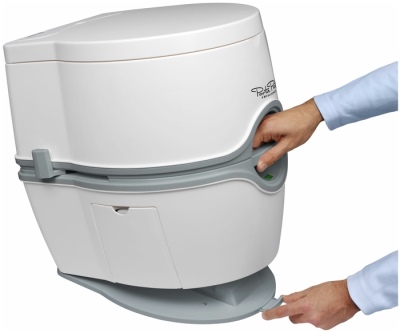
- Storage tank weight. If the toilet is used by a lonely elderly person or an adult with a weakened physical condition, it will be difficult for him to endure too heavy models. In this case, it is better to rely on more frequent, but at the same time the most comfortable cleaning. The optimal solution would be a toilet, the tank of which is designed to store 10-15 liters of waste, its weight when filled does not exceed 16 kg.
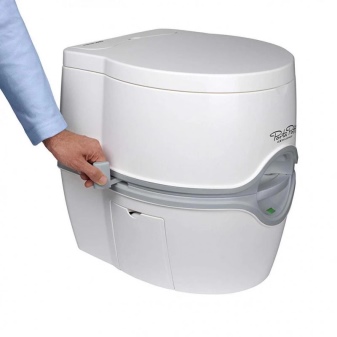

For comparison: a 20 liter container will weigh at least 25 kg. If you do not calculate your strength, then any cleaning of such a toilet will turn into a laborious painful procedure. In addition, small mini-toilets can be transported in the car.
- The presence of a toilet seat. This criterion is fundamental in homes with babies.
In this case, you need to choose a children's model of such a height that it is suitable for all household members. If the toilet seat is too high, children will not be able to use it.
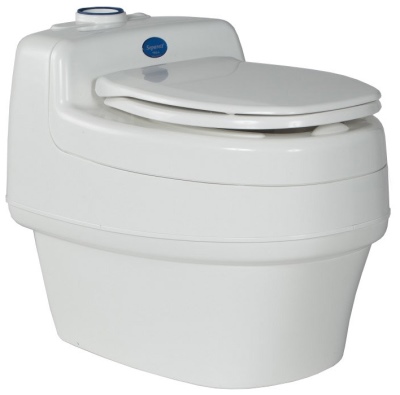
- Tank full indicator. Such models are more expensive, but in this case, you can not be afraid of overfilling the capacity.
In the recent past, during the winter months, the dachas were mostly empty. However, today the situation has changed - many people prefer to live in their country houses, even in the cold season. In this case, the choice of a dry closet directly depends on its location. If it is installed in a heated room, then there will be no difficulties with its use. But if the amenities are located outdoors, you need to use special chemical-based fluids that do not freeze at low temperatures.
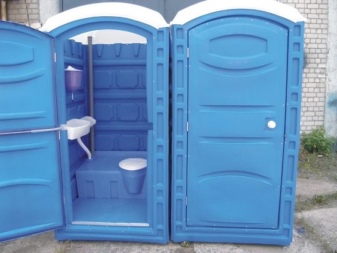
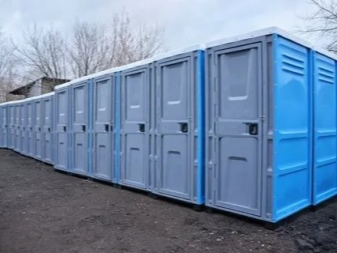
Peat models will be a good solution, since dry peat does not freeze even in the most severe frosts.The use of such versions does not require any additional costs. If you wish, you can purchase a thermo toilet.
It will be useful to get acquainted with the price overview. The most budgetary solution will be liquid models. The simplest samples with a lower tank capacity within 20 liters usually cost from 4 to 10 thousand rubles. Dry closets in the form of cubicles, which are often placed on city streets, are assessed taking into account their configuration:
-
the price tag for economy class products starts from 13 thousand rubles;
-
for the "standard" will have to pay for 3-5 thousand rubles. more;
-
"Comfort" costs about 20 thousand rubles;
-
VIP provides lighting and heating, it will come out in 30-40 thousand rubles.
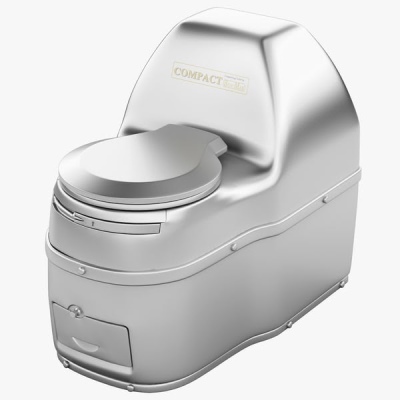
Not everything is unambiguous with peat models. On the market you can find samples of domestic production, which every summer resident can afford. For example, Piteco dry closets cost from 5 to 10 thousand rubles. While the cost of imported products is much higher, the purchase of the Finnish model KEKKILA Termotoilet will cost 40 thousand rubles.
Electric dry closets are divided into two groups.
The most accessible are waste segregated models... In this case, liquid drains are discharged into the ground or into a tank through a hose.
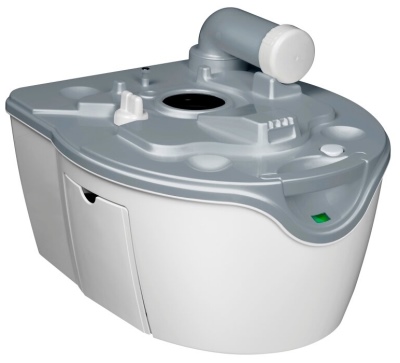
The second category involves the complete processing of faeces, as well as toilet paper.... First, heating is activated, as a result all excess liquid evaporates, after which the dry residue is burned.
The Separett models belong to the toilets of the first group, the price tag for them starts from 18 and ends with 60 thousand rubles. In the second segment, Biolet Mulltoa toilets are distinguished - their purchase will cost from 50 to 150 thousand rubles.
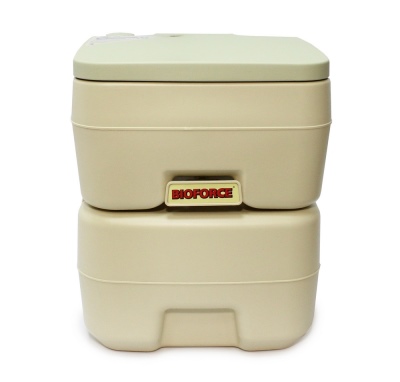













The comment was sent successfully.